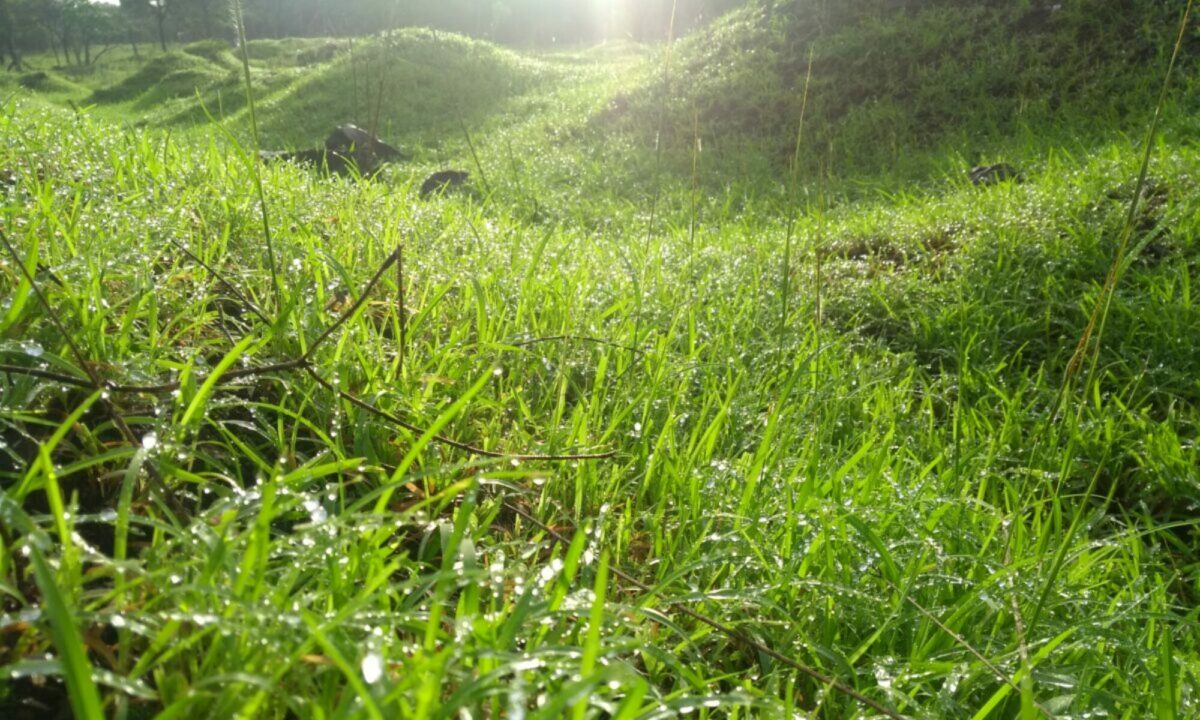Obviously any discussion about the Mutha is incomplete without a mention of the floods of 1961 when the Panshet dam burst causing massive destruction of life and property, the scars of which may be evident even now. Several ghats along the river were washed away, many trees uprooted, homes and families destroyed forever.
Nature has a way of making its presence felt, especially when people take it for granted. Many of us don’t even know their names, a sad state indeed. Recently I came across a group of enthusiastic ecology lovers who also love the city of Pune and specifically its rivers. The Jeevit Nadi has taken up the mantle of reconnecting Punekars with its rivers and their Muthai River Walk successfully does that.
On a chilly December morning I joined a fairly large group of people for this walk which began at the Vruddeshwar Siddeshwar Ghat. The sky blushed with the rising sun to welcome us, an awesome sight indeed. As walks go, the distance covered is not really large or strenuous but it subtly focuses on the sad state of affairs there.
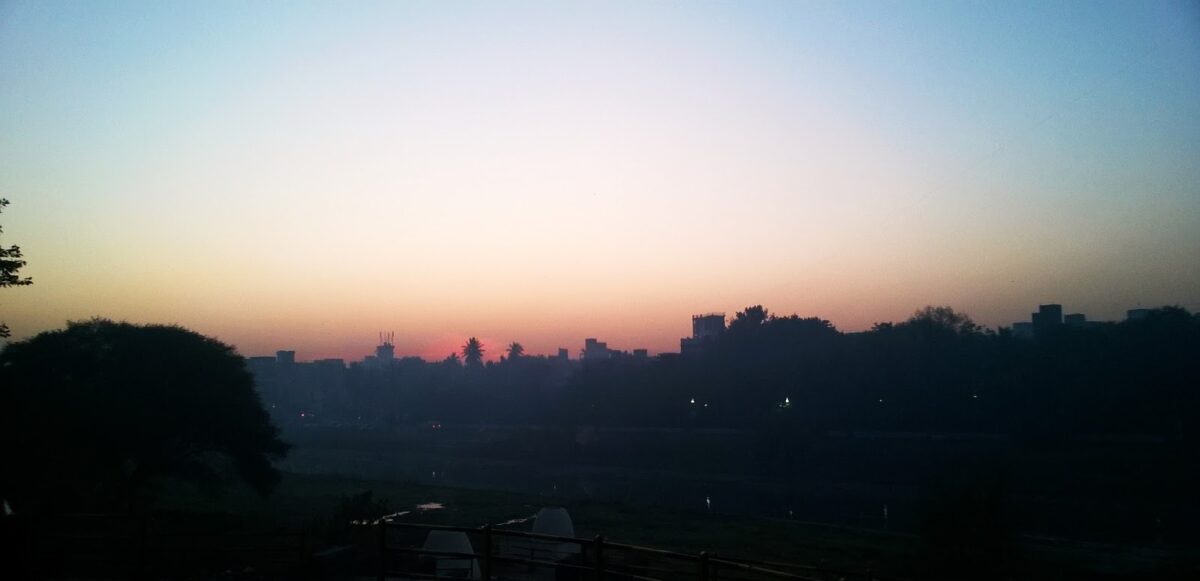
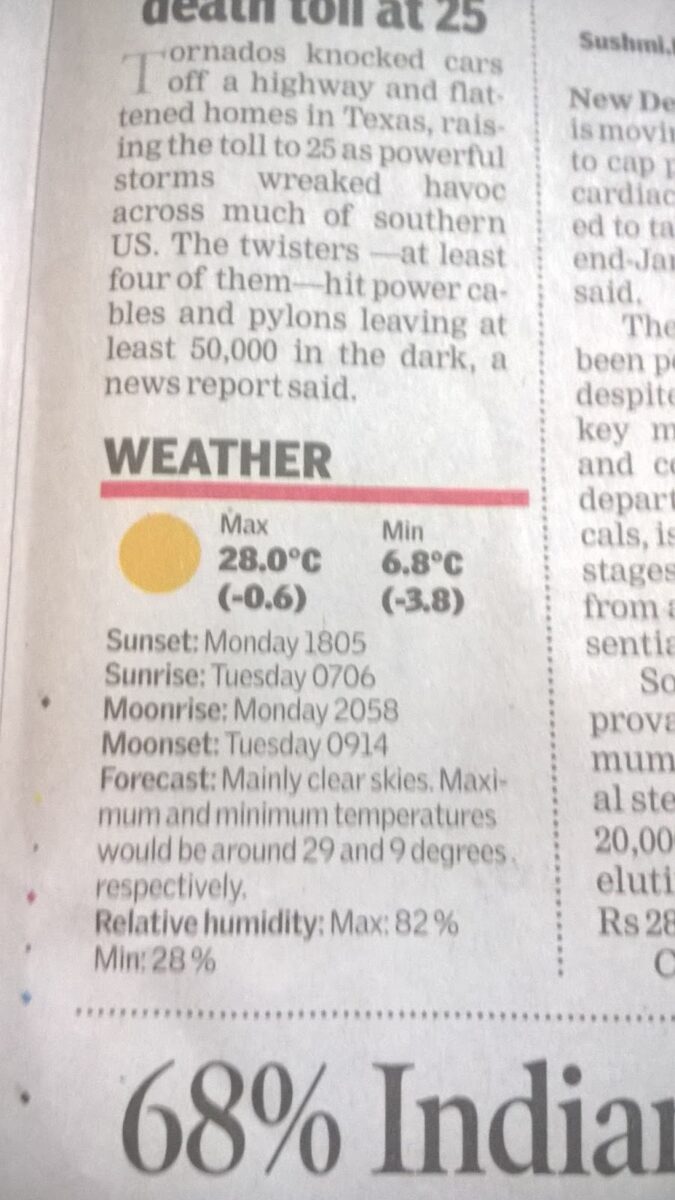 |
| Brrrr… 6.8deg C that morning |
The guides took us back several thousand years, as they narrated a mythological story about the origin of these rivers. Believe it you wish or dont… either way its an interesting tale. Based on the artefacts found on the banks of the river, the river may be older than the Ganga, they added.
Phew!
Standing on the river bed, we are at the lowest spot in the city. On either side, the Mutha can be seen to be meandering in gentle curves through Pune. I had never realised this aspect of the river course till I stood at that spot.
There are several interesting sites along the river, some historical, some religious but all point to the river’s importance in the daily lives of people of Pune in the days gone by. Bapucha Jhara near the Omkareshwar Mandir is the most interesting as it is a perennial source of water.
Possibly a couple of hundred years ago, once the city residents no longer had to depend on the river for their water requirements (development of underground water ways by the Peshwas and later due to construction of dams followed by modern municipal water distribution systems), they slowly got disconnected with it. Eventually an apathy has crept into us about our natural water resource and heritage. We take it for granted.
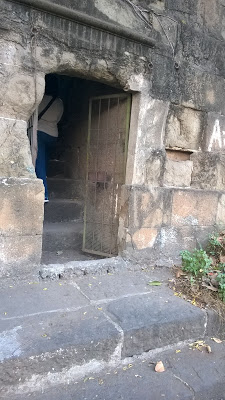 |
| Residences alongside the river had steps leading right up to the bank. Here is one… |
We walked along trying to imagine the flora and fauna that flourished here and not too long ago. Salix tetrasperma, Wild Date, Cyperus rotundus, Polygonum glabrum, Crinum viviparum, Homonoia riparia are among the riverine plant species, of which only one Salix tree still exists… Avian friends like the Pheasant tailed Jacana, Pied Kingfisher have long left the Mutha…
The river is dammed hence whatever water is seen flowing on the Mutha is water that has been used – domestically and by industry. Pune is located not far from where the river arises and it is the first major urban settlement on its course. There is no need to describe the pollution we Punekars pour into the river- the sight and smell along the course is sufficient to pierce every conscience.
On that day, I learnt about the things we can do at an individual level that WILL make a difference. All that is required is a minor change in our lifestyle, in the products we use – one at a time.
Here are some images that force us to sit up. Think. Act. Today… Instead of the annual attacks of consciences that we suffer on Ganesh Immersion days.
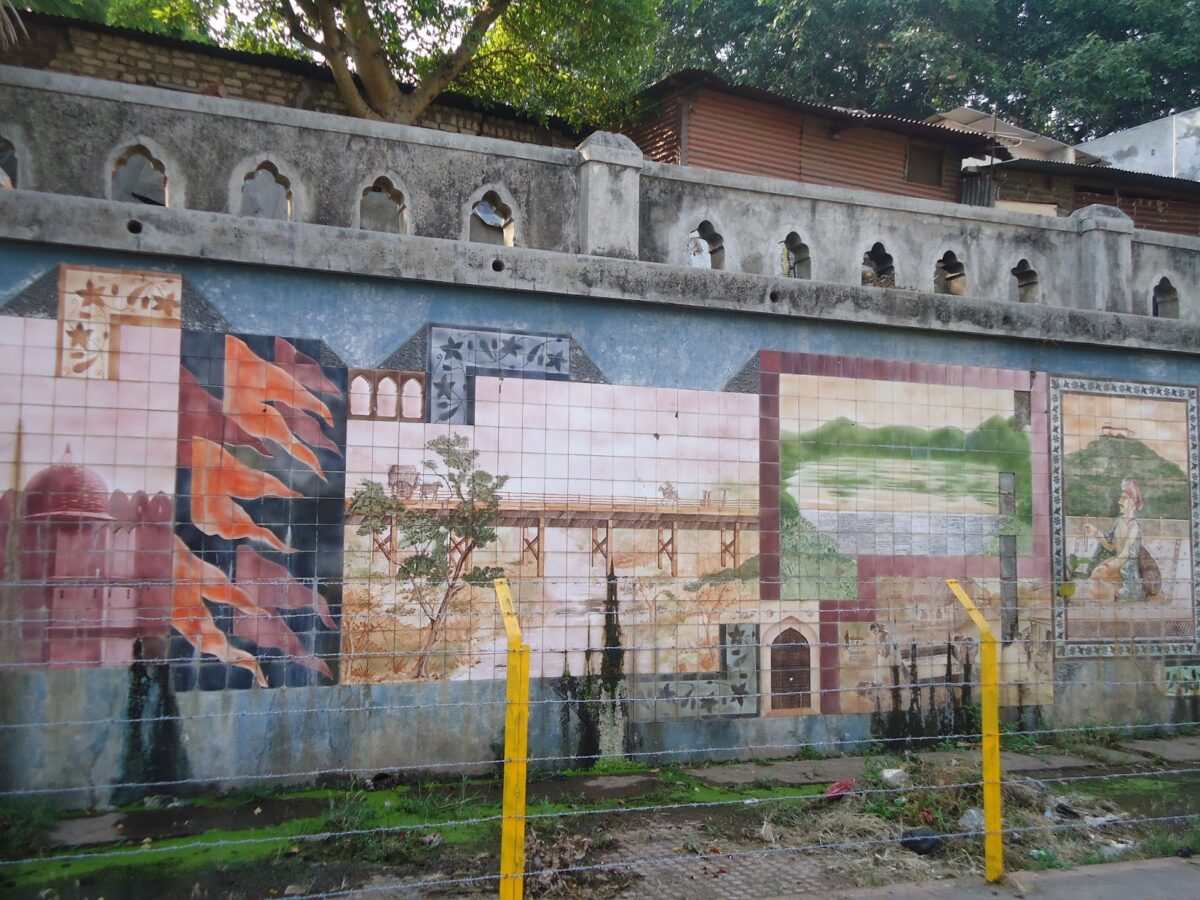 |
| Mural of the Lakdi Pul seen along the river near the Poona Hospital |
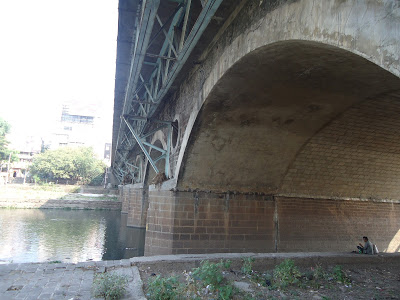 |
| Below the iconic Lakdi Pul (photo not during the Jeevit Nadi Walk) |
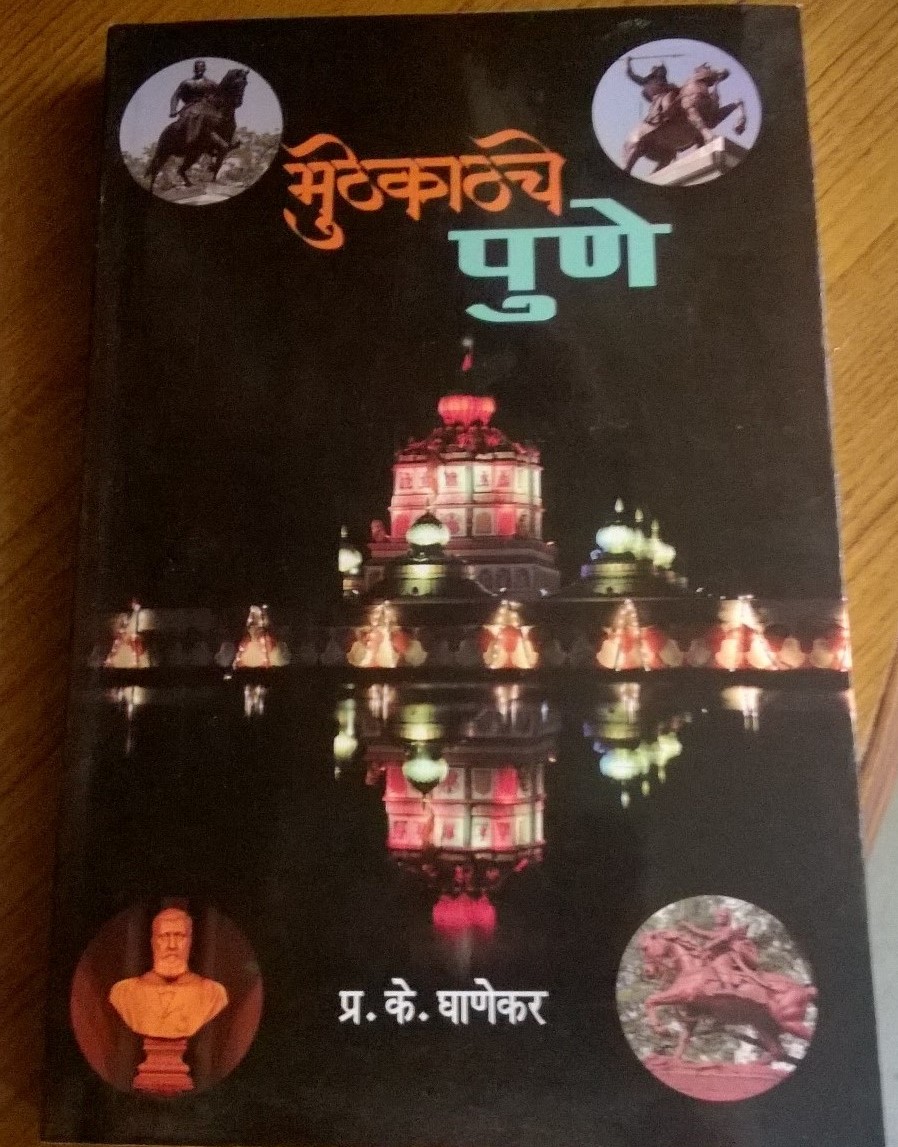 |
| “Muthekathche Pune” by Prof PK Ghanekar gives the history and geography of Pune on the banks of the River Mutha |
Obviously there is much that the authorities can do but possibly the will is lacking. I read an article in The Telegraph that the River Thames was biologically dead at one point in time. As a result of massive efforts to clean up and undo the damage, the Thames has become clean and beautiful again.
Surely we can do something similar here in Pune.
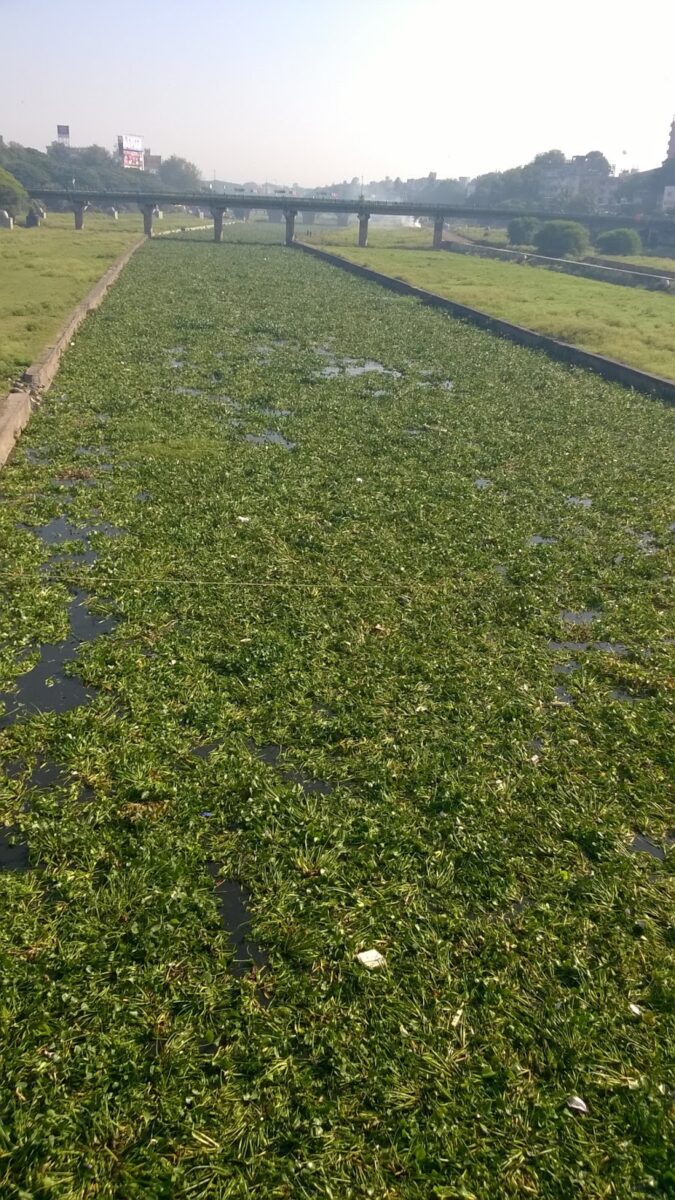 |
| Hyacinth filled river (Photo taken on Anant Chaturdashi 2015) |
I have seen some old paintings or photos from the British era that show a beautiful flowing river. obviously Pune is much bigger now, and the dams mean water is used by Punekars yet surely, some of the river’s glory can be restored. I pray for the day when the River Mutha and Mula regain their beauty.
So if you are looking for something different to do this weekend, take a walk by the Mutha River.
Can you hear its cry for help?
